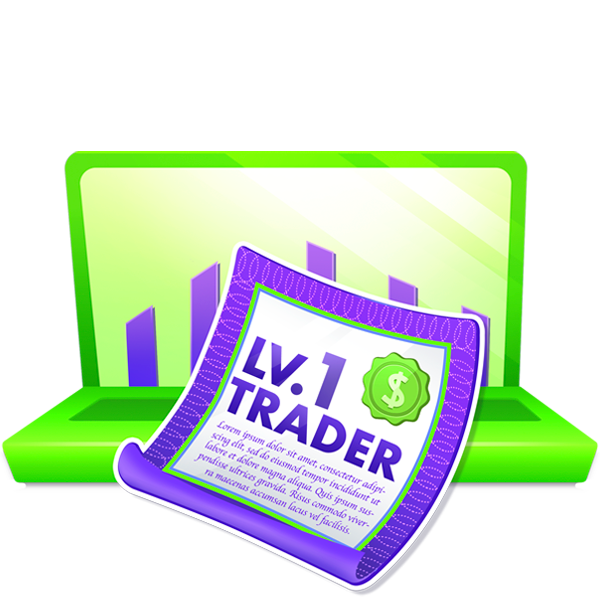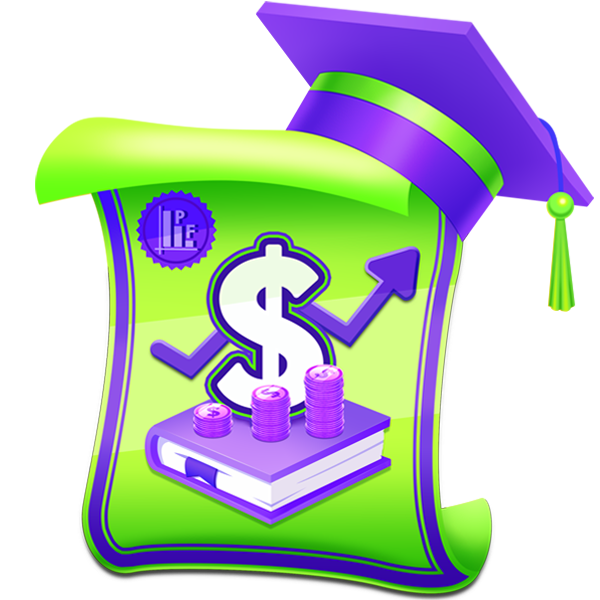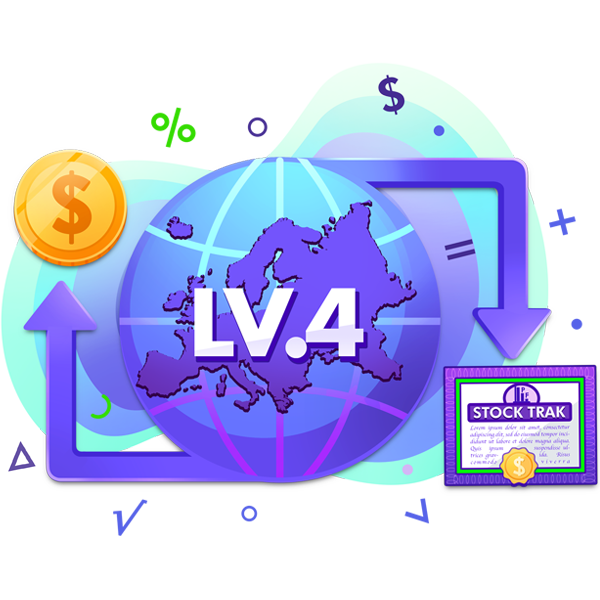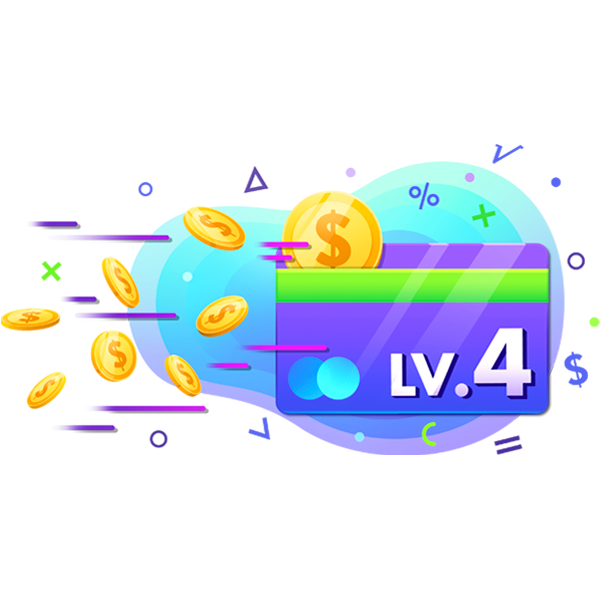Stock A certificate that entitles its owner to a percentage of ownership of a business, including all assets and profits. Stocks are typically traded between investors on Stock Exchanges. Click Here for our lesson on Stocks
State Income Tax The income tax levied in the United States by individual states. Not all states have an income tax, and instead fund their government through sales taxes or taxes on natural resource extraction. Related Lessons
Standard Deduction An amount defined in law in the United States that can be subtracted from a person or household’s total income before taxes are applied. Households can also choose to instead use an Itemized Deduction, where they list out specific tax-except purchases they may have made during the year, but the Standard Deduction is Read More…
Spreads Spreads refer to the action of placing two or more option trades at the same time on the same underlying security, seeking to profit off of the changes in that underlying security’s price under different scenarios. Some spreads even maximize profit if the stock’s price does not move at all. Click Here for the Read More…
Spending Shock An unexpected event that requires a person to spend money that was considerably outside their budget or spending plan and must rely on tapping into emergency funds or credit cards to pay for.
Spending Plan A document created by a person that outlines all of the spending that will be done over the course of a month (or longer) and compares against expected income. Spending plans are usually based on previous spending to make them more realistic.
Speculation The act of buying securities in the hope that the price will rise quickly to be re-sold for a large short-term profit. Speculation in investing is a major source of price instability.
Specialty Goods Types of goods that serve a small niche market, rather than having broad appeal. Specialty goods are typically more expensive and/or custom made.
Specialization An economic concept where persons, markets, or entire countries invest more resources into becoming very good at making certain types of goods and services and trading the surplus with other persons or countries that are good at something else. By specializing, efficiency is increased, and by trading both parties to the trade have greater Read More…
SOX Act A financial regulation law in the United States that imposed stricter financial reporting requirements and independent auditing of accounting information in the United States to protect investors in publicly traded companies from internal fraud (i.e., dishonest activities by the company’s own management or accounting teams).
Solvency The ability for a business or government to be able to pay its bills with its liquid assets. An “insolvent” business is one that is facing bankruptcy.
Sole Proprietorship A type of business entirely owned by a single person.
Social Security Number A person’s unique identification number in the United States. Social Security Numbers were first used solely for identification for Social Security benefits but have since expanded to be used as an identifier for practically all federal services. Click Here for our lesson on Income Tax Filing and the Form 1040
Social Security A public pension system in the United States, which pays benefits both to retired persons and those with disabilities that prevents them from working. Social Security is funded by a payroll tax. Click Here for our lesson on Income Tax Filing and the Form 1040
Social Responsibility The concept that a business has a duty to society at large to act in a fashion that promotes equity, environmental responsibility, and fairness. Social Responsibility is the opposite of the Profit Maximization philosophy, where a business’s only objectives are to maximize profit for their shareholders.
SMART Goals A management concept that states that goals created by a company should be Specific, Measurable, Attainable, Relevant, and Time-Based. Using SMART goals ensures that a business has effective tools to measure the success or failure of an objective.
Small-Cap A publicly traded company with a total value of stock less than $1 billion.
Skilled Labor A person or group of people that has some specialized skill or abilities that makes them uncommon in the job market, and unable to be replaced with any other random person off the street. Most jobs are considered “skilled” in some way and require some prerequisite education or training.
Simple Will A basic will that outlines how a person’s assets should be distributed to survivors in the event of death. Ideally a simple will should also include provisions for how any outstanding debts should be repaid. Click Here for our lesson on Simple and Living Wills
Shortage The quantity demanded exceeds the quantity supplied.
Short-Term Investments Investments that are purchased with the intention to sell after a period of less than one year.
Short Term Gains The increase in the value of an investment over a period of less than one year. Short-term gains are typically taxed at a higher rate than long-term gains.
Short Squeeze A coordinated financial maneuver by a group of investors that identifies a stock that is currently heavily short-sold by large investors, and purposefully buying up shares of this stock to drive up the stock’s price. This forces the large short-selling investors to experience large losses – and forces them to buy back shares Read More…
Short Sell The act of borrowing a share of stock, immediately selling it, then buying it back later to return it to the person or business it was borrowed from. This allows the investor to profit from a decrease in the stock’s value – they need to pay back a stock at a cheaper price Read More…
Short Sales (Real Estate) The act of a home owner (or bank repossessing the home if the borrower stopped paying) selling a home for less than is currently owed on a mortgage. Short sales are not preferred by anyone involved and are usually only done if it is not possible to sell the home for Read More…
Sharpe Ratio A risk-adjusted measurement of a portfolio’s performance. High Sharpe Ratios both have strong returns, but also consistent returns (few highs or lows – just a consistent growth in value).
Shares Outstanding The total number of shares of stock that are currently circulated between investors of a company. This can increase if the company issues more stock or decrease if the company buys back its own stock.
Shares The number of stock certificates issued by a company, sold to raise capital to fund the expansion of the business.
Shareholder’s Equity The total value of a business as measured in its financial statements. Shareholder’s Equity is the total assets minus the total liabilities.
Shareholders The persons or businesses who own stock in a corporation. These are the legal owners of the corporation itself.
Settlement A concept where a lawsuit is “settled” between the parties involved before it goes to court to be decided by a judge or jury. Settlements are cheaper than court-mandated resolutions and can include confidentiality or no-fault provisions of the settlement agreement (so the person or company being sued can pay out the settlement without Read More…
Series 7 A financial exam required by investment professionals to be licensed to buy and sell stocks and is a prerequisite to be licensed to work at a brokerage firm.
Series 6 A financial exam required by investment professionals to be licensed to buy and sell certain types of investment products and time series contracts.
Self-Selection Problem A concept in insurance where the people who are most likely to require large insurance pay-outs are the ones most likely to buy insurance. This drives up the price of insurance (since the price of a policy is based on the average amount the insurance company will need to pay to cover costs), Read More…
Security Type Diversification An investment concept where an investor spreads their investments across multiple security types to protect against swings in overall financial markets. Click Here for our lesson on Building a Diversified Portfolio
Security Type The type of investment of a paper asset. Stocks, bonds, and mutual funds are different security types. Related Lessons
Securities A type of investment made in a paper asset, like a stock, bond, mutual fund, future contract, or option contract. Related Lessons
Secured Loan A type of loan that has some type of collateral that the creditor can repossess if the borrower stops paying the loan. Secured loans typically have lower interest rates than unsecured loans. Car loans and mortgages are types of secured loans. Related Lessons
Sector Diversification An investing concept where an investor would want to spread their portfolio across multiple economic sectors to minimize risk of one sector losing value, while being able to capture gains in value across a wider range. Click Here for our lesson on Building a Diversified Portfolio
Sector A division of the economy of businesses that engage in roughly similar types of activities. Sectors include agriculture, healthcare, heavy industry, and others.
Section 8 A federal housing subsidy program that offers market-rate rent vouchers for low-income families. “Section 8” vouchers allow rents to be paid to private landlords.
SECA The Self-Employed Contributions Act is a law that requires self-employed people to report their income (and pay income taxes) to the federal government. Click Here for our lesson on Income Tax Filing and the Form 1040
SEC The Securities and Exchange Commission – the primary regulatory body in the United States that regulates financial markets and imposes reporting requirements and disclosure rules for publicly traded companies.
Seasonal Unemployment Periods of unemployment experienced by certain professions during certain times of the year. For example, many farm laborers or theme park workers will become unemployed during the winter months. Click Here for our lesson on Unemployment
Scientific Management An approach to management pioneered by Fredrick Taylor that analyzes workflows in order to improve efficiency. A scientific manager would be interested in how much time it takes for a worker to accomplish some specific task, or points where miscommunication take place to identify areas of improvement in the workflows of the company Read More…
Scarcity An economic concept that states that humanity has unlimited wants, but limited resources. Because all resources have some limit, nothing is ever “Free”.
Savings Account A type of bank account used for long-term savings of cash. Banks use savings account deposits to fund loans they issue to people and businesses and pay the savers interest on their savings. Savings accounts do have a return on investment, but it is much lower than most other investment vehicles. Click Here Read More…
Sallie Mae The largest providers of student loans in the United States. Sallie Mae was originally created as a government entity but was privatized and now is a publicly traded company. Click Here for our lesson on Student Loans
Sales Tax A tax levied on the sale of all finished goods and/or services. Sales taxes make up an important component of government revenues, and can vary significantly by city, state, and country, and even on different types of products. Click Here for our lesson on Sales Tax
Sales Strategy The general approach of a person or business to present products or services to potential customers in a way that is likely to encourage that customer to make a purchase. This can include what types of customers to pursue, specific “pitches” of how to present the product, or discussions on pricing to make Read More…
Safe Deposit Box A physical box located in a bank’s vault that is rented by individuals or business to save crucial physical documents or objects in a secure location.
S&P 500 A stock index of 500 of the largest securities on the New York Stock Exchange from a wide range of economic sectors, frequently used as a gauge for the performance of the stock market as a whole. Related Lessons
Running A Surplus The status of a government to currently have more revenues than expenses. This allows the government to bring some of today’s revenues forward to the next year.
Routing Number A number that appears on a check that refers to a specific bank. Checks will include both a routing number (referring to the bank of the person who writes the check) and an account number (the specific bank account from which the check is paying).
Roundtrip Transfer A deceptive action of a business to funnel transactions between different parts of a business or its subsidiaries in order to show higher total revenues in a given period, and make the company look like it has greater revenues than it actually does.
Roth IRA A type of retirement fund in the United States where the retiree pays the full income tax on their income when they earn it and deposit it into the account but pay no income tax on the growth on their investments when they withdraw it after retiring.
Risk Aversion An economic concept that observes that given two options with the same expected value, the average person will usually take the least-risky route. For example, when most people are offered $20 in cash, or a coin flip with $40 if it is heads, they will take the sure bet of $20.
Risk Appetite The individual preference of an investor for their balance between risk and reward. Conservative investors usually prefer lower risk and lower rewards, aggressive investors prefer higher potentials for reward and are willing to take bigger risks to get it.
Risk The chance of loss in an endeavor. Investments with the highest possible payoff also tend to have higher risks in something going wrong and experiencing a loss.
Right To Complain A fundamental implied right in countries with Freedom of Speech that says that a customer always has the right to publicly complain about a service or product provided by a company, so long as their complaints are factual.
Reverse Mortgage A type of investment typically offered to the elderly, where a homeowner can take a loan out against the value of their home without making monthly payments to repay the loan. The loan balance increases every month based on the loan’s interest rate and is only paid back in one lump sum after Read More…
Revenues Cash and other income brought in by a business over a specific period of time.
Return On Investment Return on Investment, or ROI, is a profitability measurement that divides total profit by the total amount invested.
Return On Equity Return on Equity, or ROE, is a profitability measurement that divides the total profit made by a business by the total shareholder’s equity in the business. The formula is Net Income / Shareholder’s Equity.
Retirement Savings Contribution Credit A tax credit that applies to specific retirement savings accounts (like IRA or 401(k) accounts) that offers a rebate to a percentage of retirement contributions made that year. This tax credit increases with lower incomes and exists to encourage people with lower total earnings from still making contributions to their retirement Read More…
Retirement The act of a person formally ending their working career, living of savings, pensions, and investments going forward. Most people hope to have a comfortable retirement, where they can maintain a standard of living at the same or similar level that they had while working.
Retained Earnings The total profit of a business that is not re-invested or paid out to investors as dividends. This is profit that the company carries forward to the next quarter or year.
Resume A single document that summarizes a person’s education and previous job experience, to be shared with a potential employer when applying for a new job.
Resource Allocation The result of an economic system in a particular country. A “Market Economy” uses a capitalist economy with prices, consumer preferences, and investments to determine the overall resource allocation. A “Command Economy” has a central planning agency that dictates the allocation of resources across industry and people.
Resistance Lines A technical analysis indicator that points to peaks in the graph of a stock’s price over time to establish a “maximum” price that investors are paying before backing off (and having the price begin to fall). The act of the price going above the resistance line is called a “Breakout”. Related Lessons
Reserve Requirement A banking concept where a bank must keep a certain percentage of its total deposits “in reserve” (in its physical bank vault or on deposit at the Federal Reserve Bank), not loaned out. The idea behind reserve requirements is that it helps provide stability for a bank even if some of their outstanding Read More…
Research And Development The act of a business investing time and resources in the development of new products or services, many of which may never leave the testing phase.
Repossession The act of a creditor seizing property that was used as the collateral of a loan if the borrower is unable to repay the loan. This is most common with car loans and mortgages. Click Here for our lesson on Mortgages
Replacement Cost The cost of changing from one good or service to another. This may be the cost of replacing a worn-out piece of machinery with a new one, or the cost of switching from one service provider to another.
Renter’s Insurance A type of liability insurance that protects a person renting a building or apartment, protecting against theft or damage to their stuff. This is significantly cheaper than homeowner’s insurance, because the renter would never need to pay for damage caused to the rented property itself (only their stuff inside it).
Religious Donation A type of donation made to a church or religious institution. This can also be called a “Tithe”. If the religious organization has tax-exempt status, this donation can be written off of the donor’s taxes.
Relative Price The ratio or comparison between the prices of two different goods or services. It represents the value or cost of one item in relation to another, indicating the trade-off or exchange rate between the two items.
Regressive Tax A type of tax that has a higher rate on persons of lower incomes than persons of higher incomes. An example of this is a sales tax. With a sales tax of 8%, a person who is earning $10,000 per year will usually spend almost everything they earn (with not much room for Read More…
Reconcile The act of evaluating financial records and entering missing data or correcting errors so the records accurately reflect the transactions that took place.
Receipts A financial record serving as the proof of purchase of a good or service, with a record of the transaction for the purchaser to keep as proof of the transaction.
Recession A period of time characterized by low (or negative) growth in GDP and job losses.
Reasonable Person A legal concept of what an average person would think or do in a particular situation. The “Reasonable Person” is frequently used in a benchmark to determine of a person was purposefully misled by a contract or other situation. A famous example is that when someone sued the Captain Crunch cereal manufacturer because Read More…
Real-Time Price A type of stock or other security quote that uses the to-the-second market pricing. Real-time quotes are not available from all vendors because exchanges typically charge much higher fees to providers to display this data to end customers. Click Here for our lesson on Getting (and Understanding) Stock Quotes
Realized Losses The decrease in value of a stock or other investment from when an investor purchased it to when it was sold.
Realized Gains The increase in value of a stock or other investment from when an investor purchased it to when it was sold.
Real Interest Rate The interest rate on a loan, minus inflation that has occurred over the previous year. The Real Inflation Rate can only be calculated in the past, since inflation is only measured in the past. Click Here for our lesson on What Are Interest Rates?
Real GDP Gross Domestic Product that has been adjusted to account for inflation over time. Real GDP is used to measure the total economic growth over time, controlling for changes in prices. Related Lessons
Real Estate Investment Trust (REIT) A type of organization that sells shares to the public to raise money to purchase housing or commercial property that it then rents out to households or businesses. The profit from the rents is paid back to investors as dividends.
Real Estate Property, land, and buildings that are bought and sold either for use, or as an investment.
Rate Of Return The amount of growth in an asset’s price over one year.
Raise Capital The act of a business to sell shares in order to raise money to fund future growth.
Rainy Day Fund A type of separate savings that is reserved for either emergencies or some large purchase in the future. Rainy Day funds differ from Emergency Funds in that the Rainy Day fund is sometimes also used to save up for vacations or other “wants”.
Quote Information about a stock’s price at a specific time. A quote will include the company’s name, ticker symbol, time of the quote, bid price, ask price, and last price it was traded. More information may also be present (such as sector, industry, or day’s change). Related Lessons
Quick Ratio A company’s current assets (minus inventory) divided by current liabilities. This is one measure of liquidity – or how able a company is to pay its bills in the short term.
Quantity Supplied The number of units of a good or service that producers are willing to make and sell at a specific price.
Quantity Demanded The number of units of a good or service that the public is willing to buy at a specific price.
Put Option A type of option that gives the buyer the right, but not obligation, to sell a stock at a certain price in the future, up until a specified expiration date. This is frequently used to protect against a stock’s price from falling – knowing they will be able to sell it at a Read More…
Put Interest The total number of investors that are willing to buy a put option for a particular stock at a particular stock price. These would be the “bidders” for the option. Click Here for the Investing101 Chapter on an Introduction to Options (30 min)
Purchase Power Parity (PPP) A type of economic measurement that tries to compare the GDP (or some other indicator) of two different countries not just by the currency exchange rate, but by how much the same types of goods cost in both countries. A simple example of this would be comparing the price of a Read More…
Pump And Dump A fraudulent scheme where a scammer purchases large volumes of a penny stock, then misleadingly promotes the value of the stock to other investors. As other investors “buy in”, it drives the price up, and allows the scammer to sell their shares at a huge profit. This scheme is considered a type Read More…












































































